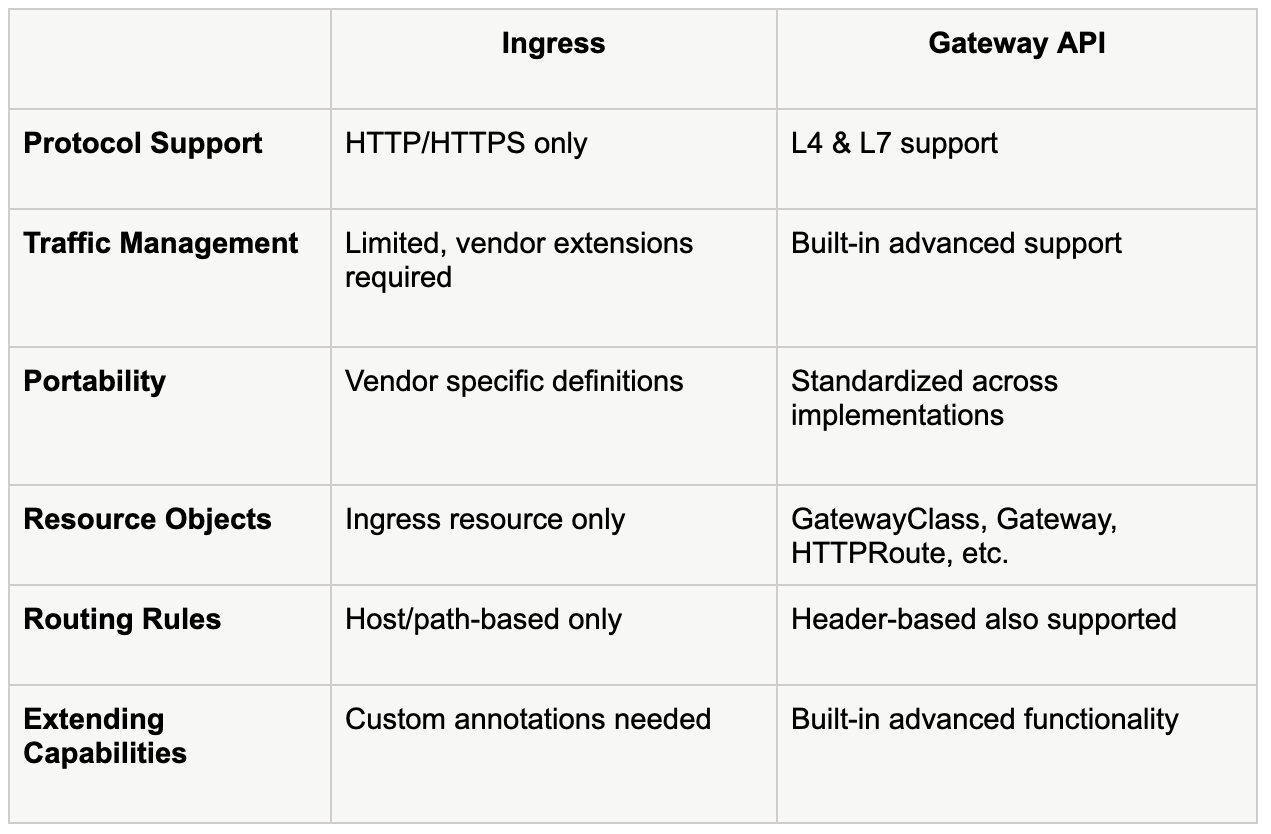As Kubernetes has become the de facto orchestration platform for deploying cloud native applications, networking and traffic management have emerged as pivotal challenges when managing access to services and infrastructure. The core Kubernetes Ingress resource addresses basic Layer 7 (L7) routing needs but has limitations in terms of flexibility, functionality, and standardization. As a successor to Ingress, the Gateway API project introduces a new set of portable network management resources as an evolution beyond traditional Ingress capabilities.
This article will explain the key differences between Kubernetes Ingress and the emerging Gateway API standard, including the limitations of Ingress and how Gateway API aims to solve them. For those using Ingress today or seeking more advanced traffic management controls, understanding these contrasts and the motivations behind Gateway API provides valuable insight into the future of Kubernetes networking.
What is Ingress in Kubernetes?
Ingress provides a centralized way to manage external access to services running inside a Kubernetes cluster, typically HTTP/HTTPS traffic at the L7 layer. Instead of individual load balancers per service, Ingress provides a centralized mechanism to manage all inbound requests to backend applications.
The Ingress resource defines routing rules that govern how external requests get directed to Kubernetes services. Rules can include hostnames, paths, and TLS configurations used to map traffic. An Ingress controller is responsible for ultimately applying routing configurations described via Ingress resources to some data plane (e.g., a reverse proxy, a load balancer, etc.) to serve the traffic.
Many organizations with capabilities in developing traditional Layer 7 proxy software supply their own ingress controller implementations, leveraging their expertise to translate Ingress resources into proxy server configurations tailored for the Kubernetes ecosystem.
Ingress abstracts a key component of service networking, allowing Kubernetes teams to simplify external access management. Specifying desired routing at the Ingress level keeps individual services decoupled from external dependencies. Ingress centralizes control so services focus on application delivery rather than networking detail.
Limitations of Ingress
While Ingress Controllers solve important networking and traffic management needs in Kubernetes clusters, the Ingress resource itself has some limitations stemming from its lack of standardization across different controller implementations.
The main limitation of Ingress is that it only works at Layer 7, specifically optimizing for HTTP and HTTPS traffic. Other L7 protocols (like gRPC) and non-L7 protocols (like TCP and UDP) must be handled using custom controller extensions rather than native Ingress capabilities. This leads to fragmentation, as enabling features like authentication, rate limiting policies, and advanced traffic management rely on vendor or platform-specific custom annotations. For example, NGINX Ingress Controllers use a different syntax and set of extensions compared to HAProxy Ingress implementations.
In addition, the core Ingress specification lacks built-in support for many advanced traffic management features needed in production scenarios. As a result, solutions for use cases like A/B testing, canary rollouts, distributed tracing, and more end up vendor-locked rather than portable. The Ingress resource itself focuses narrowly on exposing HTTP routes, while critical network functions rely on the underlying Ingress Controller. This requires configuring the controller separately from the Ingress to achieve production-grade capabilities.
Introducing Gateway API in Kubernetes
To solve the limitations around Kubernetes Ingress, the Gateway API project was created as an evolving standard to unify capabilities across different Ingress Controllers.
Gateway API defines a common set of Kubernetes resource objects and usage patterns that all compliant gateways must support. This introduces portability, enabling users to switch between commercial or open-source implementations, across both on-prem and cloud, with reduced migration costs.
Gateway API supports both L4 and L7 protocols including TCP, UDP, HTTP, gRPC, and more are under consideration. This expands its scope beyond just HTTP traffic. Gateway API also introduces new controller objects like GatewayClass for defining controller capabilities, Gateway for instantiating network gateways with those capabilities, and HTTPRoute for declaring HTTP routes (a direct alternative to the Ingress resource). In the future, additional specified objects will emerge covering newer protocols.




